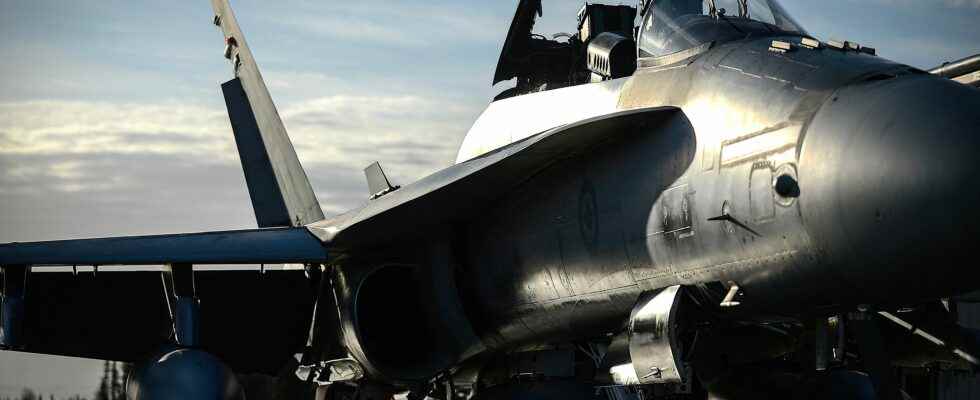Normally, Norad monitors the American and Canadian airspaces using a carpet of radars present on the ground and in the air. His headquarters, based in Colorado, serves as a collection point and his work is meant to give an accurate picture of what is happening in real time in the North American skies. At the slightest detection of a “radar anomaly”, such as an unidentified flying object, the organization gives the alert. Within minutes, he ordered the take-off of a fleet of fighter planes to investigate this “anomaly”. If it is confirmed, the Norad can give the order to shoot it down. This is basically what happened four times in the space of ten days. Since the incursion of a Chinese spy balloon last week and three unidentified flying objects this weekend having flown over the United States and Canada, Norad has been on alert.
Regarding the first officially detected object, a balloon, the United States believes was controlled by the Chinese military and was part of a fleet sent by Beijing over more than 40 countries on five continents, for espionage purposes. While the Chinese government ensures for its part that it was a civil aircraft used for research purposes, mainly meteorological. As for the three other objects shot down this weekend between Canada and the United States by Norad, they have not yet been identified. And all the tracks are considered by the authorities, including that of the extraterrestrials of which certain speculators revel. “I’ll let intelligence and counterintelligence answer that question,” Norad chief Gen. Glen VanHerck told reporters when asked if it was possible the objects were extraterrestrials. “I haven’t ruled anything out at this point,” he continued.
A bi-national body expanded during the Cold War
But Norad is far from having been founded to follow and intercept possible extraterrestrial traces on North American soil. Its acronym stands for “North American Aerospace Defense Command”. Incorporated in 1958, its primary mission is “to provide surveillance and control of the aerospace of North America”. It is also responsible for the warning mission in the event of an aerospace attack. Norad is binational, both American and Canadian. “The Americans have known for a long time that there may be a danger, a Russian incursion in particular, through the Bering Strait which separates Alaska from Russia”, comments to L’Express Jean-Vincent Brisset, researcher associated with the ‘Iris (Institute of International and Strategic Relations) and former general in the Air Force.
“Many systems have been put in place by the Americans to counter these potential attacks from the north, including this air surveillance alliance with Canada,” continues the researcher. Norad grew significantly during the Cold War as the prospect of nuclear war between the United States and the Soviet Union grew. The organization is designed to allow the two nations to share information and help protect each other’s airspace. “To my knowledge, there is no equivalent of Norad elsewhere in the world”, emphasizes Jean-Vincent Brisset. “The exchange of information between member countries of the European Union and NATO works very well, but it is not to the point of having an integrated detection and defense command”.
Joe Biden and Justin Trudeau have the last word
If the base of the organization is located in the State of Colorado, in the United States, its direction is not less bilateral. Indeed, the commander-in-chief is an American, and the technical director is Canadian. “Both are named by their respective states. It’s a very common exchange, there is no secrecy or ambiguity,” explains the Iris researcher. Especially since the decision to shoot down a flying object is taken in permanent consultation. “At the end, it is always the head of state of the country concerned, that is to say the one where the object was detected, who decides”. In the United States, it is therefore the president, currently Joe Biden, and in Canada, it is the Prime Minister, Justin Trudeau, who has the last word.
Norad works in close collaboration with the American and Canadian armies. “In the event of an alert, it is up to one of the two armies to react as quickly as possible, it depends on the geographical location of the threat”, indicates Jean-Vincent Brisset. “Norad has a permanent delegation within the two armies, in the event of an alert everything happens very quickly, in the space of a few minutes.”
New Weapons of War, New Challenges for Norad
After the intrusion of a Chinese balloon into North American airspace ten days ago, the US Department of Defense said it had reviewed the Norad surveillance posts. The three objects downed since Friday were detected after US Air Defense adjusted radar settings to look for smaller, slower-moving objects, Deputy Secretary of Defense Melissa Dalton said. “In light of the People’s Republic of China balloon we shot down last Saturday, we have taken a closer look at our airspace at these altitudes, including strengthening our radar, which may explain, at least in part, the increase in the number of objects we have detected over the past week,” she told a news conference. She said the authorities are aware of the fact that there are objects drifting at such altitudes exploited in the air by research institutes and private companies. “This type of object, of this size, flying at this height, is very common”, opines Jean-Vincent Brisset. “In France alone, ten a day are launched on average, by meteorological institutes or even universities”.
However, the researcher warns that these previously lightly monitored air zones will be more so in the years to come, and predicts that Norad “which has grown in importance in recent years, risks taking on even more”. . And for good reason: “We are giving importance to this space between the intermediate layer (i.e. the usual atmosphere) and the upper layers. All this band between 20 and 100 kilometers is destined to gain in importance because that’s where the hypersonic gliders will move, which are the weapons of tomorrow,” he concludes.
